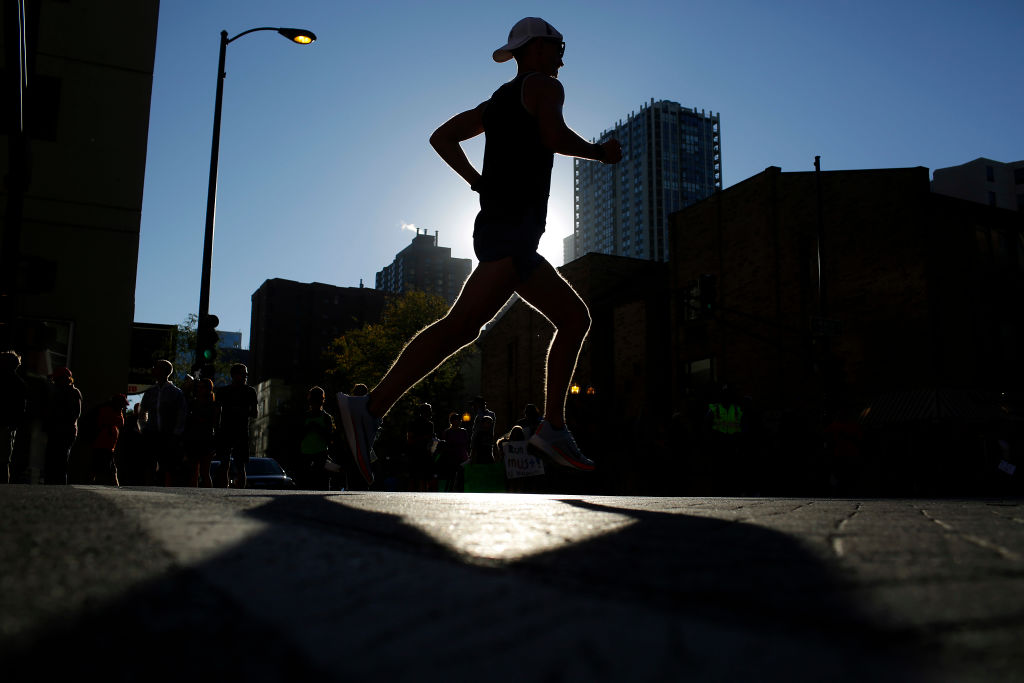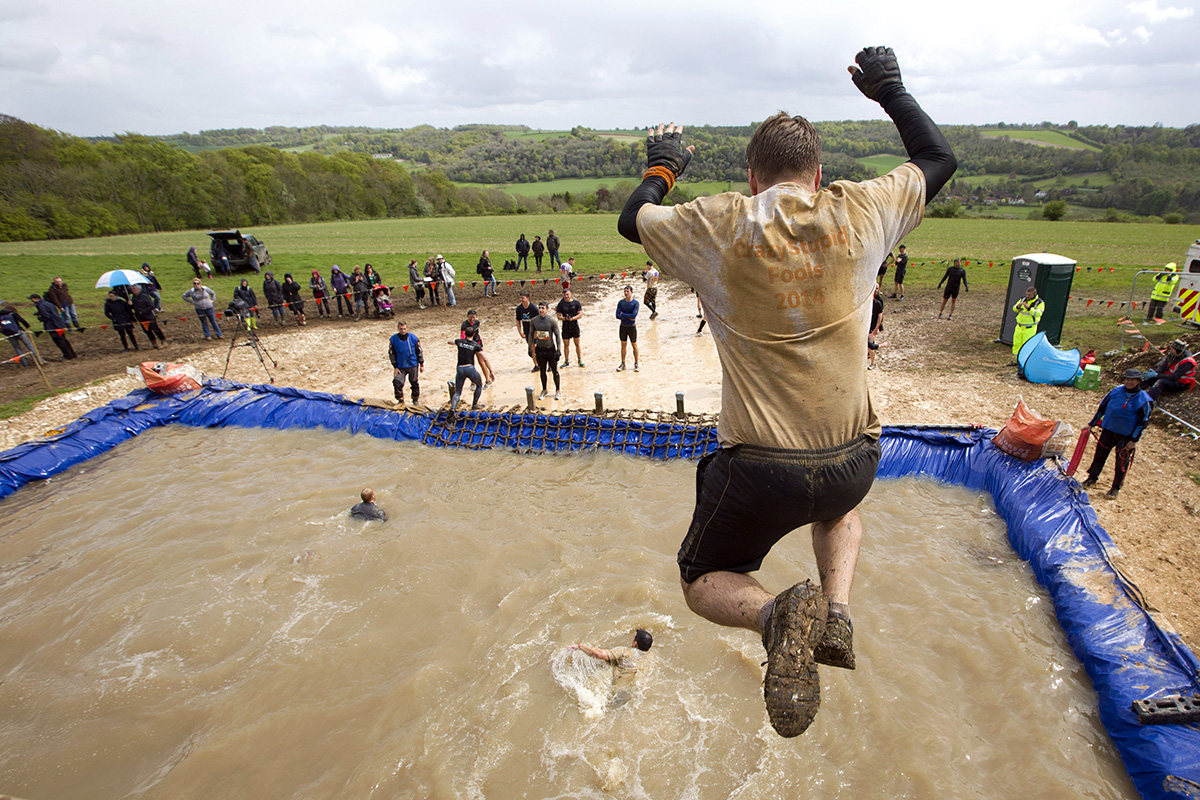Is Pain-Free Running Possible?

Pain inspires us: the victor hobbling across the finish line, face grimaced, shoulders slouched forward, legs limping along, lungs pleading. The human will, that majestic example of sheer force and determination, celebrated in folklore and marathon gossip every year. You know it’s going to hurt, maybe even really hurt, so grin and bear it, get it done.
Yet the question is begged: is all that pain really necessary?
Running is natural to humans despite it being mostly unnecessary today. We run for exercise instead of survival, fulfilling our genetic quota for movement in varying scales. In spite of a history of running, up to 70 per cent of runners injure themselves every year, even with all those unfulfilled promises of shoe technology. Considering 541,000 marathoners finished in 2013, that’s a lot of damaged bodies. How is something essential to our evolutionary heritage so destructive to our ligaments, joints, and tendons?
Reasons would take a book: sedentary lifestyles, toxic sitting habits, cushioned heels, flat running surfaces, inflexible bodies, improper alignment. This list is predominantly modern, if we account for the millions of years it took for bidpedalism to become the norm. Other animals are faster off the line, but no other perseveres for extravagant distances like us. And we can do it pain-free, if we train properly.
In his book, Ready to Run, physiotherapist Kelly Starrett writes that one problem is many runners never actually train to run—they just start running when they’re young and never take form into consideration. No serious runner would dream of this, but the majority of us are not professionals.
We run to stay in shape, to achieve a state of flow, to work through emotions, to focus, to keep our hearts healthy or waistlines trim, to have fun: all valid reasons dependent on each individual. Sadly many opt for ibuprofen and ice to deal with trouble spots instead of addressing the issue at the root. Both of these, Starrett writes, are counterproductive.
Using ice or ibuprofen with the intention of preventing inflammation is a mistake … Why would you want to try to take over the regulation of the inflammatory response when the inflammatory response is a necessary stage in healing? … Without inflammation, healing cannot occur.
Ice, Starrett notes, enhances our body’s lymphatic permeability, spilling into the injured area, not away from it. This means local swelling and pressure increase. Temporary relief is often countered with more pain, not less.
Active regeneration and recovery is an emerging practice in fitness, yet habits are hard to break—I’ll still spot an occasional guy pulling the lat bar behind his neck, for example. I witness it all the time with my students and clients: an unwavering dedication to their chosen exercise formats coupled with a complete disregard for other movements that would enhance their main passion. Yet Starrett writes, it is movement, not ice and rest, necessary for healing and, most importantly, prevention.
Humans are more reactive than proactive. We wait for injury to strike before addressing the problem. Instead of treating the cause, we sidestep it with grit and drugs. We can trick our minds, perhaps, but we cannot fool our bodies.
Starrett offers twelve standards for proper running technique and maintenance:
1. Neutral feet
2. Flat Shoes
3. A supple thoracic spine
4. An efficient squatting technique
5. Hip flexion
6. Hip extension
7. Ankle range of motion
8. Warming up and cooling down
9. Compress
10. No hotspots
11. Hydration
12. Jumping and landing
I recently wrote about being barefoot as much as possible and the damage created by the shoe industry. Many problems originate there, but like anything else, a host of issues cascades in all directions. For example, a lack of hip flexion limits your ability to squat, which affects thoracic spine mobility. Turned out feet result in a range of hotspots. Hydration influences power and flexibility. And so on.
Starrett recommends ten minutes a day of targeted, disciplined movement. Assessing personal trouble spots is the first step, as we’ll spend those ten (or fifteen, or twenty, depending on what you can afford) minutes differently. Moving your fascia, working through an entire range of motion, and focusing on tough spots are keys to pain-free running.
Ninety year olds run ultra-marathons; people over a hundred complete 26.2 miles. Force of will? Sure, that’s part of it. The will most of us need does not involve hitting the trails or the road, however. It’s during those other hours, before bed, upon waking, or midafternoon, that really matters to our performance.
After a knee surgery (from basketball) last year I was told to stop running and jumping. And I listened, for a while. Then I researched more. If all goes well I have another sixty years in front of me. No more running? That would be an affront to what we are as a species.
—
Derek Beres is working on his new book, Whole Motion: Training Your Brain and Body For Optimal Health (Carrel/Skyhorse, Spring 2017). He is based in Los Angeles. Stay in touch @derekberes.





